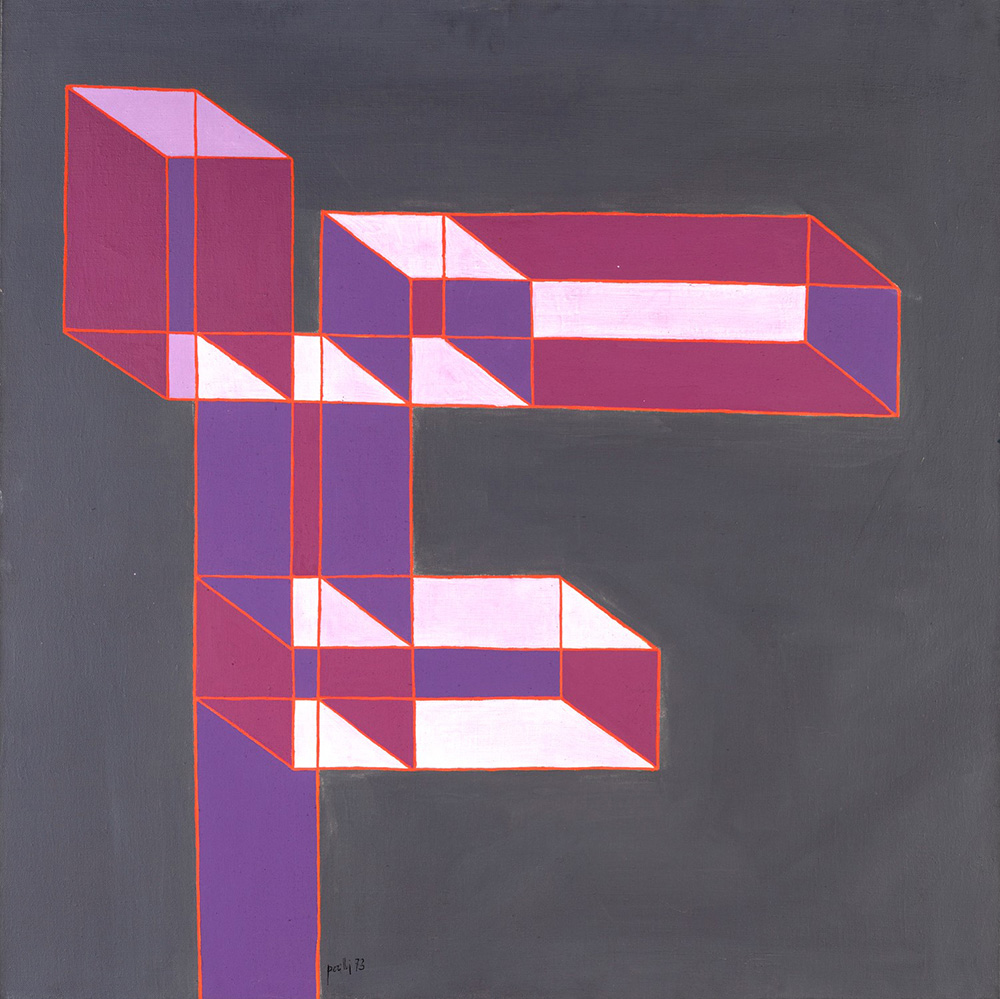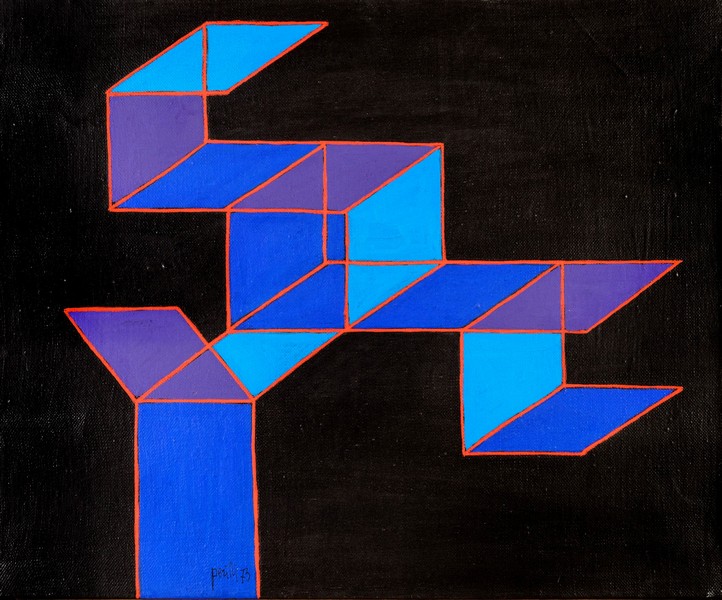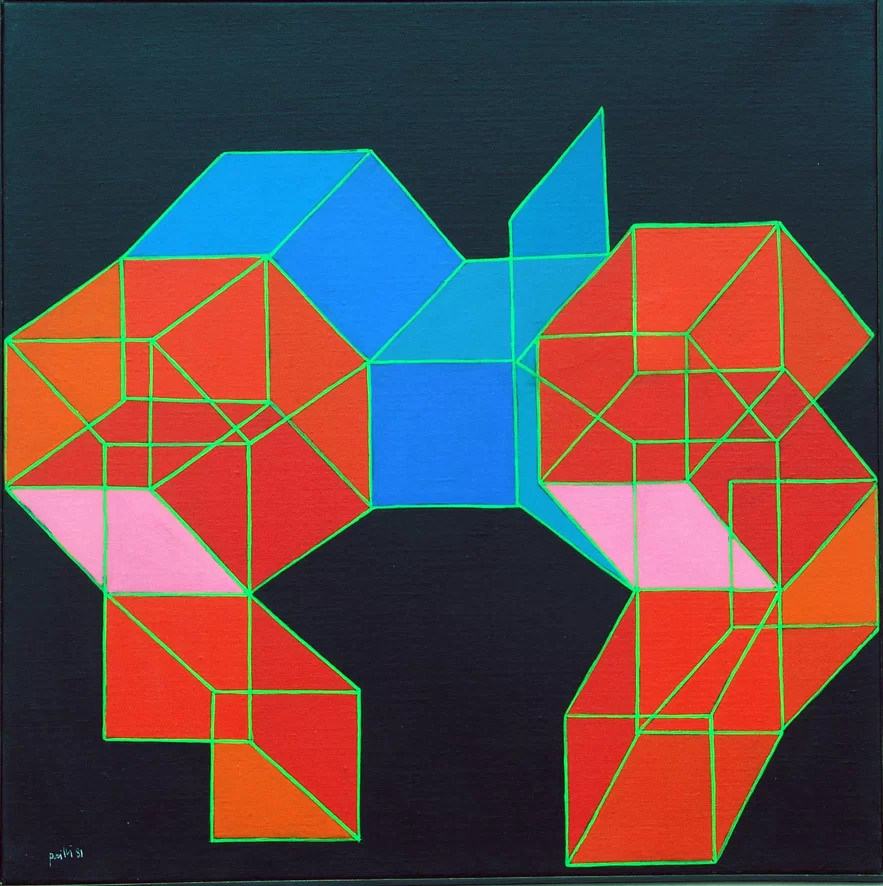Achille Perilli, a glimpse into his geometric universe

“We have a grammar in our hands, words that can say several things at once, several spaces at different times. Under Mondrian’s white background other spaces and other forms move, just as behind Kandinsky’s and Magnelli’s forms are infinite spaces and infinite forms. We try to define them. We want to achieve the concrete synthesis.”
Scratches, cuts and perhaps thoughts put on canvas that try to escape from an oversimplified schematism sum up the works produced by Achille Perilli up to the first half of the last century.
It is somewhat reminiscent of that search in Fautrier style, that atavistic yet learned need to understand not so much where one is but where one would like to arrive. And after all, Perilli has arrived somewhere. Somewhere, we are not quite sure where.
In a microcosm without geographical coordinates where fears, emotions and concepts become building precepts. Brick by brick, one on top of the other, since the 1960s Perilli has been drawing autonomous ‘blocks‘ that become things that live.
“I built a house for me for you until it disappeared, from me from you.”
Here, Achille Perilli, in precise works such as Isola dell’Ansia, constructs precisely houses, environments to be inhabited. This work of 1973 in particular is the result of a difficulty in expressing a condition in words, the island is synonymous with fear, incomprehension, anxiety.
How many times have we, too, struggled with trying to give a face, a figuration to what we feel, to the things we name a little by chance. Sometimes even according to the game of contraries.

Gradually, however, the protagonists of the artist’s works take flight and breathe a dimension that no longer sees them at the centre of the picture. They stand to the side. There is only colour in the middle and it is we who have to intervene to complete the narrative. In this irrepressible do ut des, between fear and the desire to make of that hole whatever one wants, Perilli’s ‘houses‘ are now missing pieces. As in Dedans Dehors of 1983 or in Dialectique du hazard of 1982.
The collection of works that have been circulating on the market and among exhibitions all over the world since the 1960s (even the Hermitage in St. Petersburg) seem to be the result of a meeting between Licini and El Lissitzky, the embrace of those who dream of the night at the window and those who deconstruct it.
If it is true that ‘life is the unrepresentable origin of representation‘, let’s say that in De Insana Geometria, a solo exhibition in 1998, Achille Perilli summed up this perennial attempt to depict states of mind in the form of what is furthest from inner chaos: order.
The cleanliness of the forms, the precision of the lines that do not run but wait.

“The title, De insana Geometria, stems from my continuous pursuit of this idea of association between geometry and the irrational, it is the clash between two worlds: the rational and the unconscious. Geometry is the field in which this clash best unfolds.“
The artist’s gaze in the last moments of his production adjusts its aim a little. In La vitalità sconosciuta or La piazza rarefatta of 2014, the bricks that we know add up and leave no room for any other thought, occupying every inch of the canvas that becomes smaller.
The colours light up, they blind. However, the totemic result is strong, very strong, of great impact but at the same time too ‘easy’ to experience. Getting lost here is difficult.
It is as if we are in the middle of a labyrinth in which, however, we already know where the exit is.
